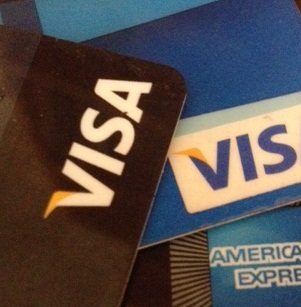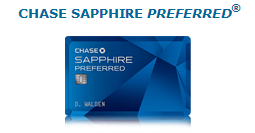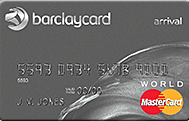 Credit card churning is the practice of repeatedly signing up for credit cards with high sign up bonuses and then cancelling these cards before any fees are charged (e.g annual fees). In some cases these sign up bonuses can be as much as 50,000 in points (worth $500 in cash back). In the past it was possible to sign up, cancel and then sign up again to earn the bonus multiple times, but credit card issuers have caught onto this and it’s no longer possible. Most cards also require consumers to spend a minimum amount before the sign up bonus is applied to their account.
Credit card churning is the practice of repeatedly signing up for credit cards with high sign up bonuses and then cancelling these cards before any fees are charged (e.g annual fees). In some cases these sign up bonuses can be as much as 50,000 in points (worth $500 in cash back). In the past it was possible to sign up, cancel and then sign up again to earn the bonus multiple times, but credit card issuers have caught onto this and it’s no longer possible. Most cards also require consumers to spend a minimum amount before the sign up bonus is applied to their account.
Contents
Steps To Take Before Churning:
Before engaging in credit card churning it’s important to
- Find out your credit score. This can be done with one of the free credit monitoring sites (e.g Credit Karma, Credit Sesame or Quizzle), the scores they provide aren’t the same as the ones used by lenders but they give a good estimate. The score most lenders look at is the FICO score, find out how to get one for free or purchase one directly from myFICO.com for $19.95 (check for myFICO.com promo codes first).Before applying for any new credit cards we recommend having a score above 700 as most card issuers will approve at this score. It’s also a good idea to read reviews of others and ask what score they had and if they were approved or denied before applying for specific cards. If you don’t have a score above 700 read our six steps to improving your score.
- Work out your monthly credit card spend. Most sign up bonuses require you to spend a minimum amount before the bonuses activate. There is no point signing up for a card unless you can hit the minimum spending requirements. It’s also a good idea to categorize credit card spending as some cards will offer different rewards based on categories (e.g 5% cash back on fuel, 2% cash back on utilities and 1% cash back on groceries). The most common categories are: Groceries, fuel/gas stations, utilities, drugstores, restaurants, movie theaters, department stores, amazon.com and specific stores like starbucks). Find out how to increase the amount you spend monthly on your credit card without increasing your overall spend.
- Decide on the type of rewards you want. Some cards offer cashback that’s added to your account monthly, whilst other cards offer points that can be redeemed for products, others offer airline frequent flyer miles. There is little point in signing up for an account that only offers airline milers if you don’t like to fly. Most cards will allow you to get cash, but often there is a penalty for this. For example one popular airline card will let you transfer $1 in airline miles for $0.65 in cash, this is a step discount and for those after cashback only would make this offer less attractive than others on the market.
- Create an organized system. It’s important to record all of the accounts that you apply for, the dates you’re approved, the dates that annual fees need to be paid, minimum spending requirements and the bonus points offered at the time of sign up. By staying organized you can make the most out of these bonuses
Best Credit Card Sign Up Bonuses:
We’ve chosen some of our favorite credit card’s with great bonuses and put them below.
Chase Sapphire Preferred – 50,000 points – $3,000 minimum spend
- 50,000 bonus points when you spend $3,000 within the first three months
- 5,000 bonus points if you add an authorized user
- 2 points for every dollar spent at restaurants or on travel (an additional point is earned if airfare and accommodation is booked through Chase Ultimate Rewards)
- 1 point for every dollar spent on all other purchases
- Each point is worth $0.01 in cash back or $0.012 in travel when booking through Chase Ultimate Rewards
- $125 annual fee, first year waived
This is a great card, a spend of $3,000 results in $500 of bonus cash back plus an additional $30 ($60 if travel or restaurant purchases) from the points accumulated from the $3,000 spend.
Another great thing about this card is at the end of the year you can downgrade to the Chase Sapphire and not be charged a yearly fee. This lets your average age of accounts improve over time, helping your credit score.
Apply for a chase sapphire preferred card
Barclaycard Arrival World MasterCard
- 40,000 bonus points when you spend $1,000 in the first 90 days
- 2 points for every dollar spent
- $89 annual fee, first year waived
- 0% APR for first twelve months
- Free FICO score, updated monthly
- Each point is worth $0.01 and can be redeemed for travel expenses
The Barclaycard Arrival World MasterCard has a healthy 40,000 point bonus and only requires a $1,000 spend. Another great benefit is that Barclaycard now gives their customers access to a free FICO score which is great for people getting their feet wet with credit card churning as they’re able to get an updated monthly score and can see when they’re ready to apply for a new card.
The only downside is the points cannot be redeemed for cash, so if you don’t travel often this card isn’t for you.
Apply for a Barclaycard Arrival World MasterCard
Why Do Credit Card Companies Offer Sign Up Bonuses?
Credit card issuers offer these sign up bonuses to encourage people to sign up for their cards. They make their money not only on interest paid by those who don’t pay their statements monthly, they also make money every time the card is used.
When a credit card is used at a store or online, the owner (merchant) has to pay VISA or AMEX (processor) a portion of the sale (anywhere from 1-5% depending on the specific card and their merchant agreement). VISA/AMEX (processor) then sends part of their fee to the credit card issuer (e.g Barclaycard or Discover). This allows the credit card issuers to offer incentives to consumers to use their card.
Who Shouldn’t Churn Credit Cards?
Churning cards is a great way to make a little bit of extra spending money each year, or help pay for that next vacation but it’s not for everybody. Below we look at some people who shouldn’t churn cards.
- Consumers with poor financial discipline. If an individual has poor impulse control or a history of mismanaging their finances then they should stay clear from churning. Having multiple credit cards with high credit limits and high interest rates can spell disaster and a lot of debt for a consumer who isn’t in complete control of their spending habits.Churning only makes sense if an individual is charging money to their card card they would’ve otherwise spent. Making large frivolous purchases just to reach minimum monthly spends is counter productive and will usually result in an individuals overall financial health declining rather than improving.
- Consumers with a bad credit score. Consumers with a bad score will usually be denied for credit cards and thus can’t take advantage of credit card churning. Applying for new cards will also further lower a credit score (as recent searches are a negative scoring factor), so these consumers should focus on fixing their score before attempting to churn. A lot of cards also won’t allow individuals to apply for a card if they’ve been previously declined. We suggest starting with a score of at least 700 before attempting to churn.
- Consumers that plan to apply for a mortgage within the next one to two years. Churning cards negatively affects your credit score in a number of ways. Whenever an individual applies for a card they make a hard inquiry, these inquiries stay on their credit report for a period of two years. “Recent searches for new credit” accounts for 10% of an individuals credit score, the more searches the worse the score. Each search for new credit will generally cause a drop of no more than 5 points, this might not sound like a lot but it can quickly add up when churning. These point loses are generally recovered by the six month mark. Applying for new accounts also lowers the average age of accounts, which falls under “length of credit history” and makes up 15% of a FICO score (although this category also looks at the age of the oldest account). A mortgage is usually the largest credit purchase a consumer will make, so going in with the best possible score is vital to ensuring that they get approved and also get offered the best possible rate of interest. A FICO score of 780 or above is enough to get the best rate on the market (assuming other factors such as length of employment and income are within the lenders criteria).Churning is simply not worth the risk if a consumer is planning on applying for a mortgage. For example on a $300,000 loan over 30 years if they fall from the A category (best interest rate) to the A- category (second best) they’ll pay an extra $9,453.6 over the life of their loan (a fall to the B category would be a whooping $47,746.8 extra).
FICO SCORE GRADE TYPICAL MORTGAGE RATES* 720-850 Excellent A 700-719 Very Good A + 0.13% 675-699 Good A + 0.65% 620-674 Fair A + 1.80% 560-619 Bad A + 4.30% 500-619 Very Bad A + 5%








